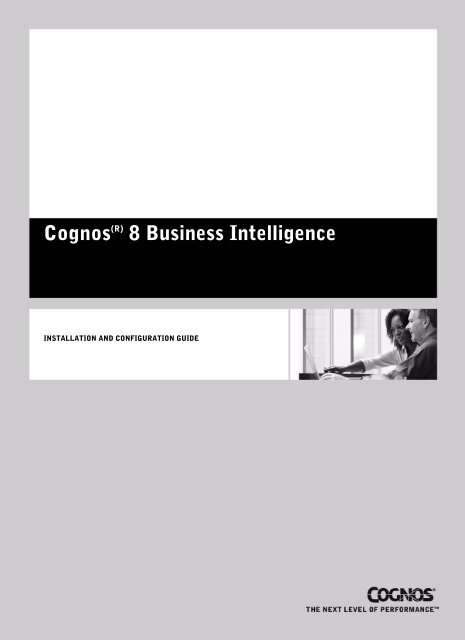

- CHANGE TEXT ENCODING IN COGNOS UPDATE
- CHANGE TEXT ENCODING IN COGNOS CODE
- CHANGE TEXT ENCODING IN COGNOS PLUS
- CHANGE TEXT ENCODING IN COGNOS FREE

And I certainly hope it wasn’t to save space (compared to NVARCHAR / UTF-16) since that isn’t what UTF-8 was designed for (or does). The problem is: why does this feature even exist? Why devote development resources to it? What problem(s) does it solve? It wasn’t needed for importing or exporting data since that was resolved two versions ago (in SQL Server 2016). Unfortunately, this feature provides much more benefit to marketing than it does to users. Otherwise, you are better off using Data Compression, or possibly Clustered Columnstore Indexes. These encodings really only make sense to use with NVARCHAR(MAX) data, if the values are mostly ASCII characters, and especially if the values are stored off-row. TL DR: While interesting, the new UTF-8 Collations only truly solve a rather narrow problem, and are currently too buggy to use with confidence, especially as a database’s default Collation.
CHANGE TEXT ENCODING IN COGNOS PLUS
No need for an extra column plus a computed column, no need for SQLCLR or COMPRESS, no binary values, and no getting frustrated that Unicode Compression doesn’t work with NVARCHAR(MAX). UTF-8 appears to be the ideal solution: standard ASCII characters take up only 1 byte, all Unicode characters are supported, the value is still a string (not binary) so it can be searched / filtered on / indexed / etc, and it is the preferred encoding for HTML and XML files. UTF-8 Encodings (introduced in the upcoming SQL Server 2019).

But, this is not for every scenario, especially because it affects the whole table. Support for MAX types in Clustered Columnstore Indexes (as of SQL Server 2017). But this is not for everyone, and this might be a bit much to do on many columns. Do this in stored procedures to be transparent to the caller. You can use these to Gzip and Ungzip values (without resorting to SQLCLR), and store the much smaller VARBINARY value. But, this still didn’t work for off-row values, and in-row NVARCHAR(MAX) values only get the simplistic compression.ĬOMPRESS and DECOMPRESS built-in functions (introduced in SQL Server 2016). But this was still only available in Enterprise Edition, and still didn’t work for off-row values, and in-row NVARCHAR(MAX) values only get the simplistic compression.Ĭompression for the all editions, not just Enterprise (as of SQL Server 2016, SP1). Unicode Compression (introduced in SQL Server 2008 R2, and implemented as part of Data Compression). row overflow and MAX values that can’t fit in-row). But this was a bit simplistic, only available in Enterprise Edition, and didn’t work for off-row values (i.e. Of course, some folks don’t like SQLCLR (for some reason), and you need to decompress in order to view / search / filter on the value, and this might be a bit much to do on many columns (though not as bad as having both VARCHAR and NVARCHAR versions of the column).ĭata Compression (introduced in SQL Server 2008).
CHANGE TEXT ENCODING IN COGNOS FREE
And you can even get pre-done versions of these - Util_GZip and Util_GUnzip -in the Free version of SQL# :-).

NET to access GZip/Deflate functionality such that you can compress data into VARBINARY(MAX) on the way in, and uncompress back to NVARCHAR(MAX) on the way out. So, thankfully, Microsoft provided a solution to this problem. While this approach does work, it is not something you are going to implement in 50 or more columns. Then you can have a computed column return the non-NULL column for that data. The idea is to store values that are 100% ASCII in the VARCHAR column, and anything else in the NVARCHAR. One approach is to have two columns for the data, one for each datatype. While some claim that “ disk is cheap“, wasting space negatively impacts query performance, backup size, backup and restore times, etc. However, then we are wasting space for all of the data that could fit into VARCHAR and take up half as much space. When we have data that is most often standard ASCII, but has the potential (whether it ever happens or not) to have non-ASCII characters (names, URLs, etc), we have no choice but to use NVARCHAR. NVARCHAR, being a Unicode datatype, can represent all characters, but at a cost: each character is typically 2 bytes.
CHANGE TEXT ENCODING IN COGNOS CODE
VARCHAR is typically one byte per character but can’t represent a wide range of accented characters all at the same time (more than would be found on a single 8-bit Code Page).
CHANGE TEXT ENCODING IN COGNOS UPDATE
( NOTE: For recent update, please see “ Update for CTP 2.2” section)įor some time now, many of us have struggled with data that is mostly standard US-English / ASCII characters but also needs to allow for the occasional non-ASCII character.


 0 kommentar(er)
0 kommentar(er)
